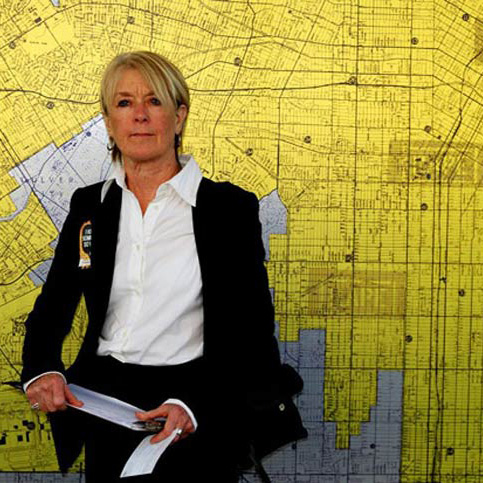Oakland Sharing the Vision, the Oakland Police Department, and other agencies collaborated with performance and installation artist Suzanne Lacy, other artists, and Oakland youth to illuminate youth perspectives on Oakland’s community policing initiative. Developed over two years, Code 33: Emergency!: clear the air sought to increase youth participation in a new civic process. Assisting artists included Annice Jacoby, Unique Holland, and Julio Morales.
In January 1998, the Oakland Police Department introduced 57 Community Policing officers into beats throughout the city and began forming local Neighborhood Crime Prevention councils. The city sought to build stronger relations between police and the community. Little evidence suggested youth involvement in these councils, yet the city’s rates of youth violence and prevailing youth distrust of law enforcement suggested that youth involvement was critical.
Youth participants in the project were nominated by teachers, community organizations, probation programs, and the police. Nominees created videotapes, radio, murals, and photography in workshops. Over time, 16 young people emerged as key members of a planning team for Code 33.
The culminating event featured simultaneous conversations on safety, crime, and youth relationships to police. It was set in an Oakland Civic Center garage where 100 black and white cars patrol cars beamed headlights on dozens of small roundtable conversations among 310 youth and police. Monitors on outer edges of the garage rooftop played videos created by youth. The audience and news media roamed among the cars witnessing discussions, and the work was amplified further in a media campaign.
Lead artist Suzanne Lacy works at the juncture of social justice advocacy and mixed media public art. At the time of this project, she was Dean of Fine Arts at the California College of Arts and Crafts.

